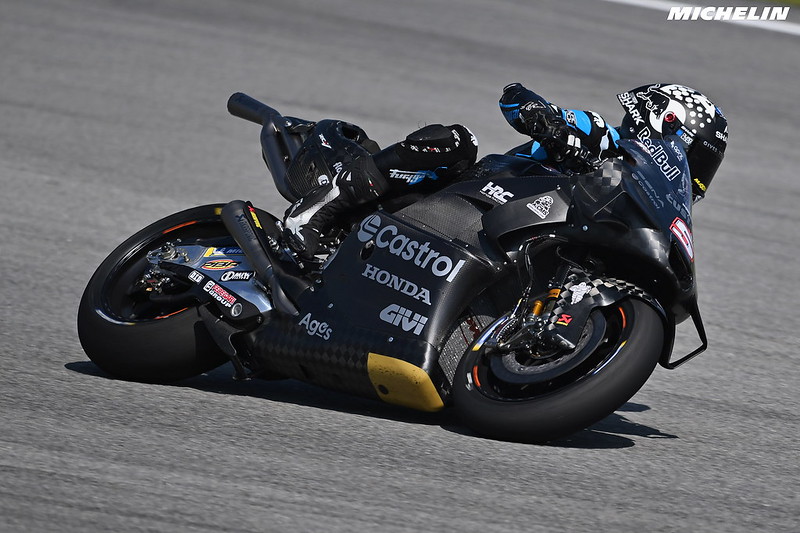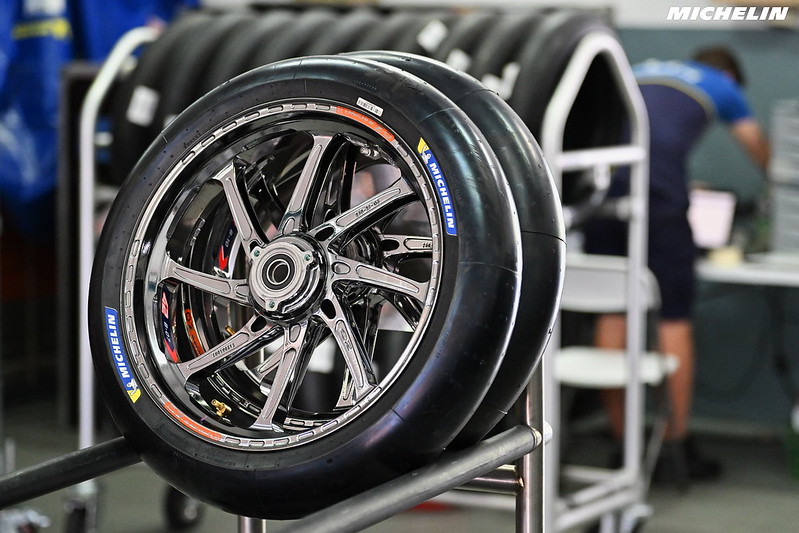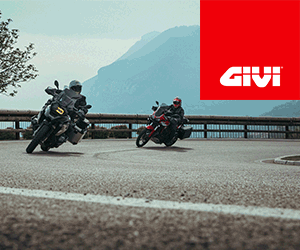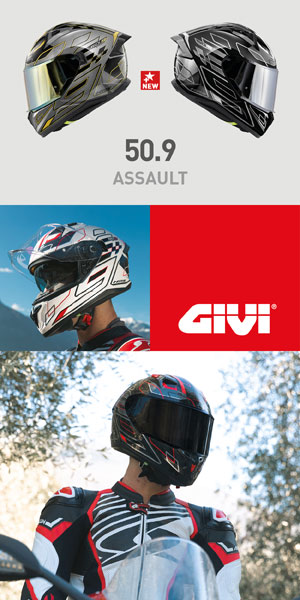• MICHELIN Power Slick tires receive new rubber compounds for the 2024 MotoGP season.
• A calendar of 21 races on four continents, with two new challenges: the new Sokol circuit (Kazakhstan) and the brand new surface of the Aragon circuit (Spain).
• Michelin, exclusive supplier of MotoGP until at least 2026, will launch a new “front” tire in 2025.
The first tests for the 2024 FIM MotoGP World Championship, which take place from February 6 to 8 at the Sepang circuit, in Malaysia, provide the start of a new season which promises to be exciting. Until November, the 22 drivers (11 teams) will meet 21 times on circuits around the world, in the United States, Asia, Oceania, the Middle East and of course Europe. Routes with very different profiles, whose specificities are all challenges for Michelin engineers. The latter were in fact responsible for developing a range of tires capable of responding to extreme demands regardless of the weather, the topography or the speed of the circuit, the type of asphalt and the number of turns. In MotoGP, each circuit has its share of specific challenges!
Developments in the MICHELIN Power Slick range for the 2024 season
The new tires offered this season to Michelin partners required long months of development. For the teams, this is not a plunge into the unknown, because the drivers had the opportunity to test them and unanimously validate their performances throughout last season. These new compounds are the beginnings of another change: in 2025, Michelin will launch a new previous MotoGP tire, this time with a new structure. It was important for the French manufacturer to evolve its MotoGP ranges smoothly in order to best support its partners, and starting with the rubber compounds was the best way.
Front tire: it welcomes many new features in the composition of its rubbers, which also result from a new method called “mixing”. In a general way, the 2024 tires are significantly stiffer than last season, in order to better respond to the increasingly strong stresses exerted on the front wheel.
Rear tire: Here too Michelin has used new technologies, ever more innovative both in terms of components and the “mixing” technique. The objective is to obtain a greater consistency of performance, and to reduce the phenomenon of wear over the revolutions. The front and rear wheel rubber compounds have different compositions and manufacturing methods.
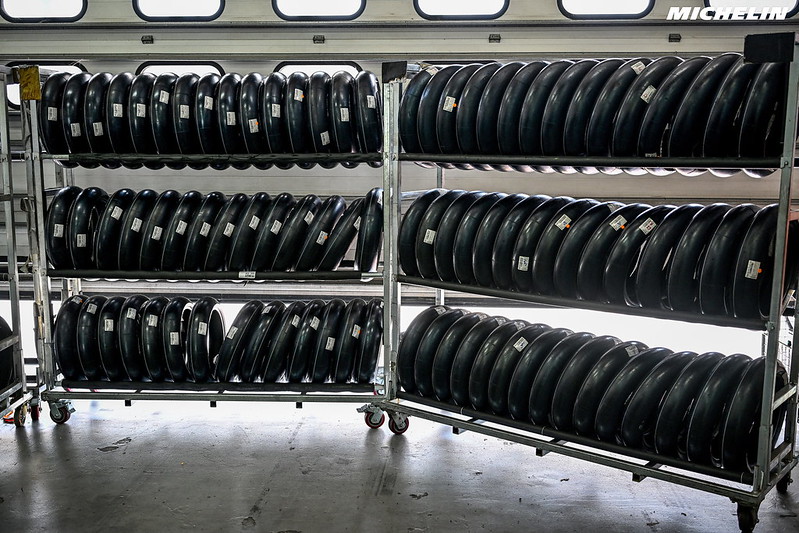
Pneumatic allocation kept at the lowest
As in all motorsport disciplines in which it is involved, Michelin develops technological and logistical solutions in a spirit of efficiency and environmental protection. The measures taken in 2023 in terms of reducing the number of tires authorized per race weekend have been renewed. “ Fewer tires used means fewer raw materials to source and use, less logistics, less assembly and disassembly and less recycling " underlines Piero Taramasso, manager of Michelin's two-wheel competition. “ Last season, we observed that the performance and versatility of our tires allowed the drivers to put on a high-level show. Using fewer tires while reinforcing the notion of competition and increasing the level of sportiness allows us to take a further step towards more sustainable and responsible motor sports. It is a real success, which is the result of the unfailing commitment of the Michelin Motorsport teams. »
For the front and rear wheels, Michelin will once again offer three notches of rubber this year – Soft, Medium and Hard – drawn from a catalog of different compounds (7 options, from the softest to the hardest) depending on the configuration. circuits and weather data. The three specifications selected will be available for the front wheel, and two of them for the rear (usually a Soft-Medium or Medium-Hard combination). Each driver will have 15 front tires (5 of each notch of rubber) and 12 rear tires (7 of the softest rubber and 5 of the hardest). Concerning rain tires, the allocation is always 6 front tires and 7 for the rear, in two specifications (Soft and Medium).
Each driver will be able to use a total of 10 front tires and 12 rear tires each weekend. Thanks to these provisions, in three years Michelin has managed to reduce the number of tires used during a season by 1. This reduction followed the observation of “actually consumed” with a view to rationalizing production and optimizing stocks, and consequently protecting the environment.
If the rear tires are in the vast majority of cases asymmetrical, in other words that they carry two rubbers more or less reinforced depending on the number of right or left turns, the front tires are on the other hand almost always symmetrical. There are only three exceptions in the season, at the Sachsenring (Germany), Phillip Island (Australia) and Valencia (Spain) circuits. In this case, their tread is made up of 2/3 1/3 of two distinct rubbers.
Note that at Sokol (Kazakhstan) and Aragon (Spain), two circuits which are entering or returning to the championship, Michelin will provide its partners with an additional tire specification at the front and rear. Drivers will then have a wider range of tires to carry out their tests and adjustments, which increases the level of performance but also safety.

The 2024 season seen by Piero Taramasso, manager of Michelin's two-wheel competition
« Last season was very interesting because it saw a reduction in the number of compounds and tires, and we saw that everything worked very well. We managed to combine our environmental commitment with an extreme level of sportiness, and Grand Prix drivers broke 36 speed or lap time records during the season.
For 2024, we are resetting all the counters because we have new rubber. We have no doubts about their performance since they have been tested and appreciated by the drivers during the test sessions. The first challenge we face this season is more of an industrial nature, because as we are starting from scratch we have to produce all the tires for the entire season. As always, we have anticipated shipments to the countries hosting the races, because we prefer to have our tires traveled by boat rather than by plane, for reasons of environmental footprint and cost.
After the formidable battles that brightened the 2023 season, I am convinced that the 2024 championship will be just as exciting, with renewed teams and motorcycles with ever more advanced technology, which will highlight the quality of our new tires. There will be two circuits which are unknown to us: Sokol (Kazakhstan), for which we were able to do simulations but where we have never driven, but also Aragon (Spain) whose layout we know but whose asphalt will be redone in spring. Under these conditions, all the data we had becomes obsolete, and we will be back in the discovery phase. But we have made all the arrangements to ensure that everything goes well, and we are now in a hurry for the season to start. »
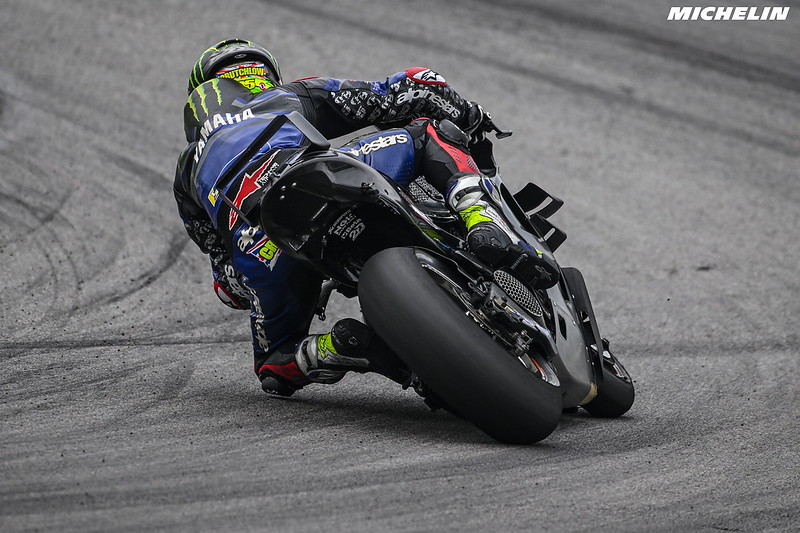
The 2024 MotoGP calendar
The drivers will meet 21 times during the season. For Sokol and Aragon, which are two new tracks, Michelin will provide an additional rubber specification, as provided for in the regulations.
In the date changes, we note that Losail (Qatar) returns at the start of the season, after having constituted the penultimate round of the 2023 championship, due to its renovation. The Catalan Grand Prix, which had slipped from June to September in 2023, will take place this year in May. A short break will take place between the beginning of July and the beginning of August, then the big Asian tour will take place in two loops of three races which will take place from the end of September to the beginning of November. The season will traditionally end on the Ricardo Tormo circuit in Valencia (Spain), where the 2023 world champion title will be played out.
| DATES | COUNTRIES | CIRCUIT |
| 8 at 10 March | Qatar | losail |
| 22 at 24 March | Portugal | Portimão |
| April 12 to 14 | United States | COTA – Austin |
| April 26 to 28 | Spain | Jerez de la Frontera |
| 10 at 12 may | France | Le Mans |
| 24 at 26 may | Spain | Catalunya – Barcelona |
| May 31 to June 2 | Italy | Mugello |
| 14 at 16 June | Kazakhstan | Sokol |
| 28 at 30 June | Netherlands | TT Assen |
| 5 au 7 juillet | Germany | Sachsenring |
| 2 at August 4 | England | Silverstone |
| 16 at August 18 | Austria | Red Bull – Spielberg |
| August 30 to 1er September | Spain | Aragon |
| 6 8 in September | San Marino | Misano Adriatico |
| 20 22 in September | India | Buddha |
| 27 29 in September | Indonesia | Mandalika |
| 4 6 in October | Japan | Twin Ring Motegi |
| 17 20 in October | Australia | Phillip Island |
| 25 27 in October | Thailand | Buriram |
| November 1 to 3 | Malaysia | Sepang |
| 15th and the 17th of November | Spain | Valencia |
An efficient race format
The regulatory changes initiated at the start of 2023 have been renewed, particularly with regard to the running of the race weekend. The action on the track begins on Friday morning, with a 45-minute Free Practice session. Then another slot, simply called Practice and this time lasting one hour, allows the 10 fastest drivers to move directly into the second qualifying phase (Q2) scheduled for the next day. On Saturday morning, after Free Practice 2 (a 30-minute session in which all drivers participate), those who have not qualified directly for Q2 compete for 15 minutes in Q1. Two of them are then drafted to constitute a contingent of 12 drivers for the final qualifying phase (also 15 minutes), which allows you to know the appearance of the starting grid. Two races follow, the first called the Sprint Race, lasting around 20 minutes on Saturday afternoon, then the Grand Prix (calibrated on double laps) on Sunday. These two races take place at 15:00 p.m. for the first, at 14:00 p.m. for the second, in local time. A program which largely appealed to the public in 2023.
« The arrival of the Sprint race spiced up the event "Indicates Piero Taramasso. « Dorna Sports, which organizes the championship, wanted a spectacle and we were not disappointed. The short format of these races encourages the drivers to give their all, regularly approaching the times achieved in qualifying. This makes for a captivating spectacle, which generates many emotions among the fans but also the teams. Because if the Sprint race represents an important issue for the championship, it also dictates a form of caution among the drivers, who must also ensure the Grand Prix the next day. It's a clever mix of risk-taking, adrenaline but also wisdom. This gives great fights on the track, but also good visibility for the discipline. Finally, the Sprint race allows Michelin and the teams to collect valuable information to prepare for Sunday's Grand Prix in terms of consistency and tire wear. »
